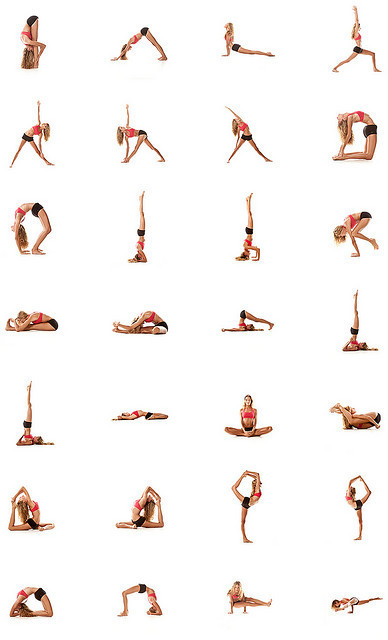 |
Rumor has it that we can all benefit from a bit of Om-infused stretching. Studies touting yoga’s mental and physical benefits abound. We’d venture to guess that many of you will hit the treadmill than will hit the shower. But maybe you should reconsider…
A lot of people think of yoga as a means of increasing flexibility, but for those of us for whom touching our toes isn’t at the top of our to-do lists, what are some of its other benefits?
Yoga develops strength, increases metabolism, increases respiration, reduces stress, alleviates muscle aches and strains, creates internal harmony and increases focus, concentration and awareness. The benefits extend both to our mental and physical well-being and health. Physically, we feel better about our bodies while we develop strength and flexibility. Mentally, we find a sense of ease and balance in our lives.
A lot of us who haven’t tried yoga think of yoga as far cry from a strength-training workout. How, exactly, does yoga increase strength?
Yoga allows you to use your own body and body weight to develop strength. Each pose focuses on strengthening individual muscle groups in different ways (balancing, inversions, twisting). Opposing muscle groups contract and expand simultaneously, allowing the contracted side to develop strength, while the expanded portion is allowed to open and release.
Yoga can be intimidating to people who have never done it before (and think of it as being all about handstands!), what do you have to say about that?
Do not feel intimidated by the instructor or other practitioners. If you have questions or need modifications, speak with the instructor before and/or after class. Yoga should be tailored and safe for your body. While healthy competition is good, knowing and respecting your boundaries is better. Another alternative is to work in one-on-one sessions with a private yoga instructor who will help you to attain your goals, work with your unique body type and schedule times appropriate to your schedule
If we’re interested in getting started, where should we start?
Find a reputable studio, with certified yoga instructors. Make a time commitment to yourself and set realistic goals. Find classes that are appropriate for your level and be patient with yourself. For beginners, classes emphasizing technique, alignment and safety are crucial to building a proper foundation and protecting your body.
There seem to be a lot of different types of yoga our there. Are some better suited for people who are new to exercise versus athletes (runners, cyclists, etc) who have just never done yoga before?
There are some studios that offer specific classes/workshops that are tailored for runners, cyclists…etc. An inquiry may be required of each studio. Otherwise, many vinyasa-styled classes are great for regular athletes as long as it is at the appropriate level for the practitioner. For beginners, Pure Yoga offers Iyengar, Basic and Slow Flow classes. Restorative classes are for those who want gentle stretching and opening in a nurturing comfortable environment. Ask your studio for a class description and its level of advancement to be clear as to how each instructor conducts his/her class.
How often do we need to practice yoga to see results?
Almost immediately you’ll feel the results of your practice. To see a physical difference, your body requires a more regular practice of 2-3 times per week at a minimum, where you are challenging yourself safely.
Have any other tips?
Be safe in your physical practice and have fun expanding your mental and physical boundaries!
http://thebeautybean.com/site/sweat/why-you-should-try-yoga/
http://thebeautybean.com/site/sweat/why-you-should-try-yoga/

No comments:
Post a Comment